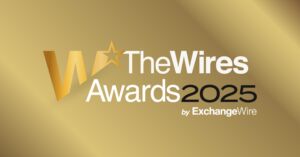Chemistry with Kindness: How Virtual Pitches Could Fix Pitching
by ExchangeWire on 7th Apr 2020 in News


CEO of Brand Champions, Fiona Wylie (pictured below) writes exclusively for ExchangeWire about how virtual pitching could provide a viable solution for marketers and advertisers in a corona-addled world.
Pitches never have been perfect. In 2018, research found that 61% of brands and 93% of agencies wanted to see a change in the process. Well, change is here now, whether we like it or not. So what shall we do about pitching?

Fiona Wylie, CEO, Brand Champions
Clearly, pitching must find an effective virtual form if the advertising and marketing world is to adapt to the new realities. Brands have sudden new priorities; agencies need to find ways to help. Between the two of them, they need something resembling a pitch. The virtual version might never be quite as good. But it also has an opportunity to be a lot less bad. If we’re looking for a temporary version of a pitch, we can throw some things out: unwieldy, over-extended processes that rumble on for months; huge pitch lists and vague briefs; excessive formality, antisocial timings, too many men; too many people involved in general.
Efficiency and leanness need to be the watchwords when we’re all pouring ourselves down a video conferencing connection. Brands should call a pitch only when they know pretty clearly what they want, and they should aim to keep the list of participants relatively short. They should be prepared to be flexible and reasonable and be open to communicating informally in advance, for everyone’s benefit.
The agency’s responsibility, then, is to attempt to generate the old magic under quarantine conditions. A pitch is a new start, a mutual audition - a first date, but in teams. As with dating, there is a belief that successful pitches often come down to chemistry; there is no reason why good chemistry shouldn’t result from a conference call, but there are new pitfalls too.
So, master the technology, practise, test what looks good, what sounds good. Social distancing leaves no option to huddle around a webcam, but in any case, you should each use a separate screen. Don’t loom. Find neutral-but-not-boring backdrops. Some suggest standing up, in order to bring the vitality and physical signals of an in-person presentation. But again, practise and get it right, because eye contact is important too.
At the agency end, there should obviously be a leader, but there should also be a role for everyone - keep silent passengers to a minimum. Stick to the brief, know your lines and respect each other’s airtime - talking across each other kills the signal. Focus ruthlessly on the task in hand, keep things succinct and powerful, avoid awkward silences.
The opportunities for pitch theatre are necessarily limited, so make your pitch simple and technologically realistic. Don’t attempt to live-stream complex material unless you are confident it will work in real time. Instead, send materials ahead, whether in digital or physical form. Don’t send food, though. You don’t want them to be worrying about the provenance of their pastries.
Make room for the client to talk, too - an hour-long video presentation is inevitably a less absorbing performance than an in-person pitch, so find ways to create back-and-forth interaction. This is a rare window to find compassion, levity and common ground - qualities that aren’t always hallmarks of pitches - so use it. At a deeper level, given that all our certainties have suddenly been challenged, clients may be more receptive than usual to unsolicited business advice.
As with everything else that has been disrupted, pitches inevitably have to find workable new models, and those should be ones that prize kindness, professionalism, creativity and mutual consideration for each other’s time.
The era of virtual pitching will surely be a temporary one. But if we set our new standards smartly and shrewdly, there is no reason why these strange months shouldn’t leave a lasting legacy when we finally reset the normal world.








Follow ExchangeWire